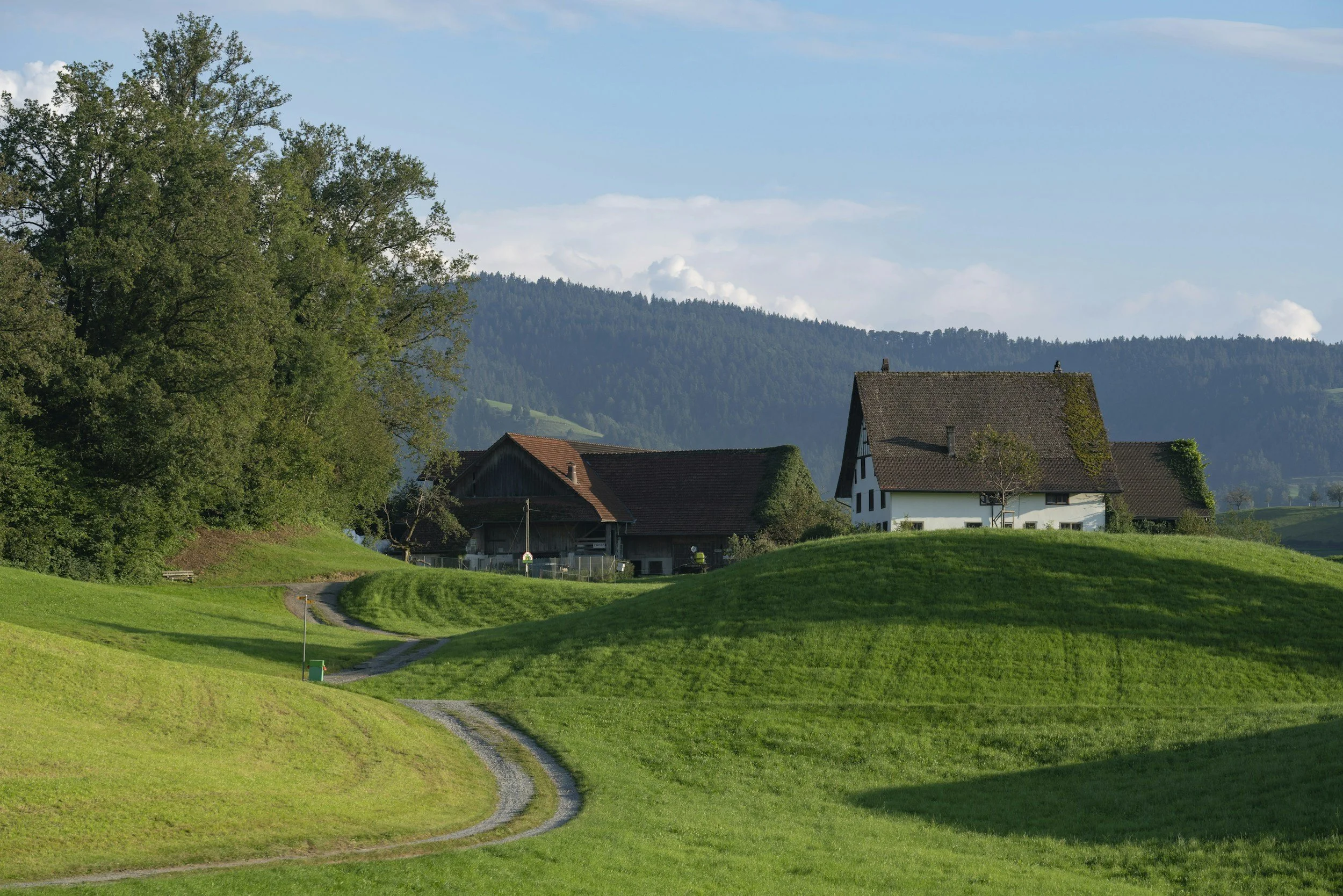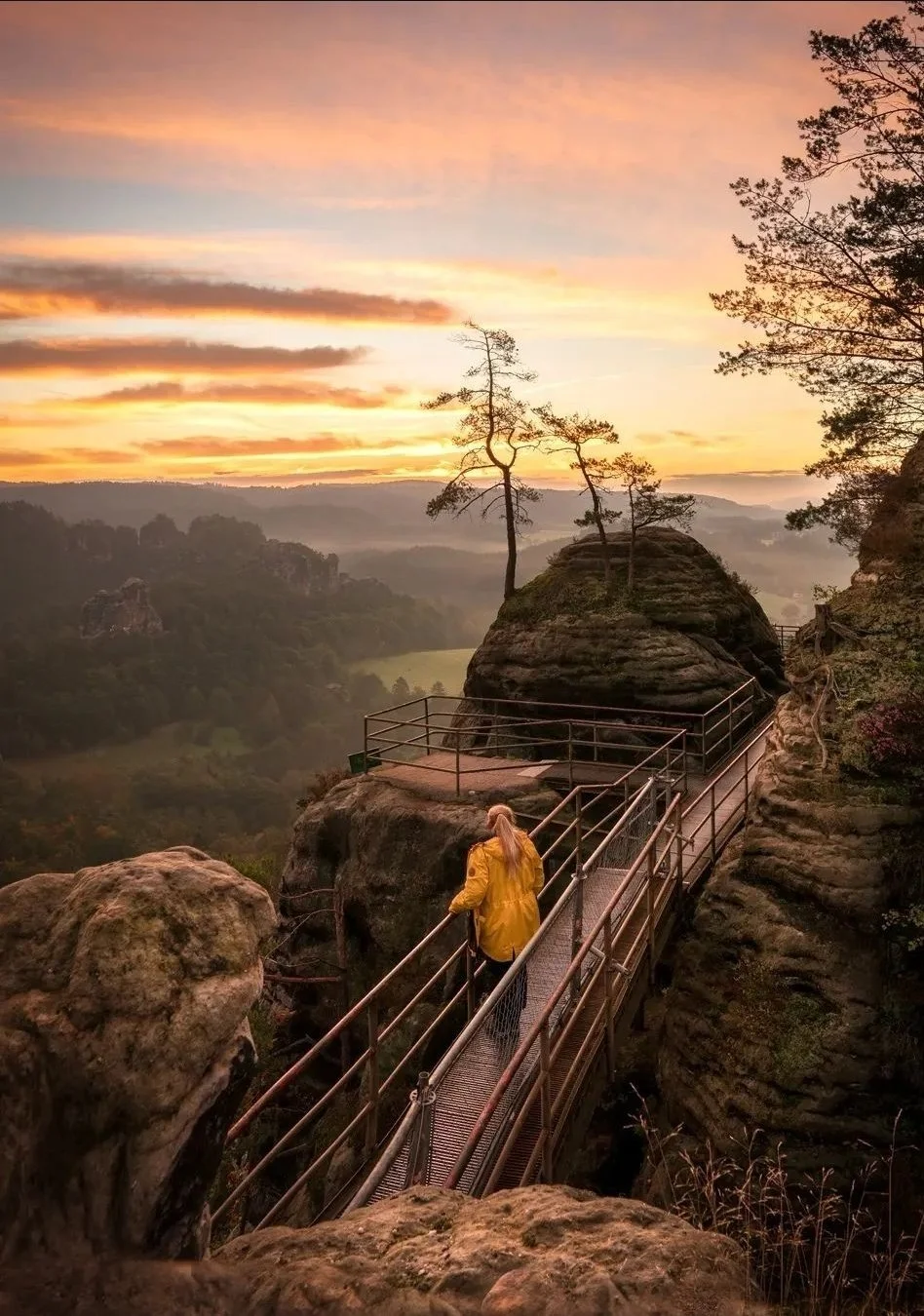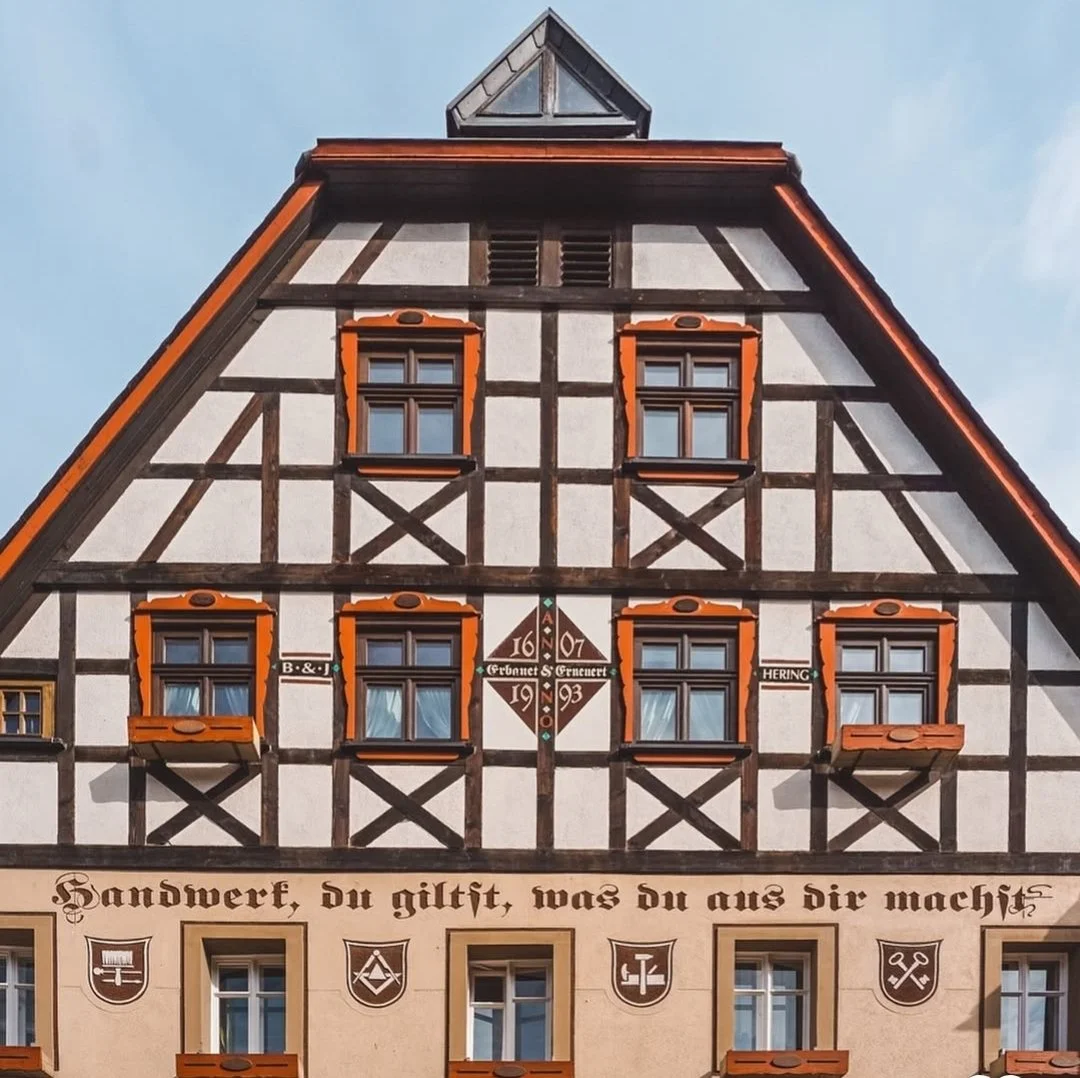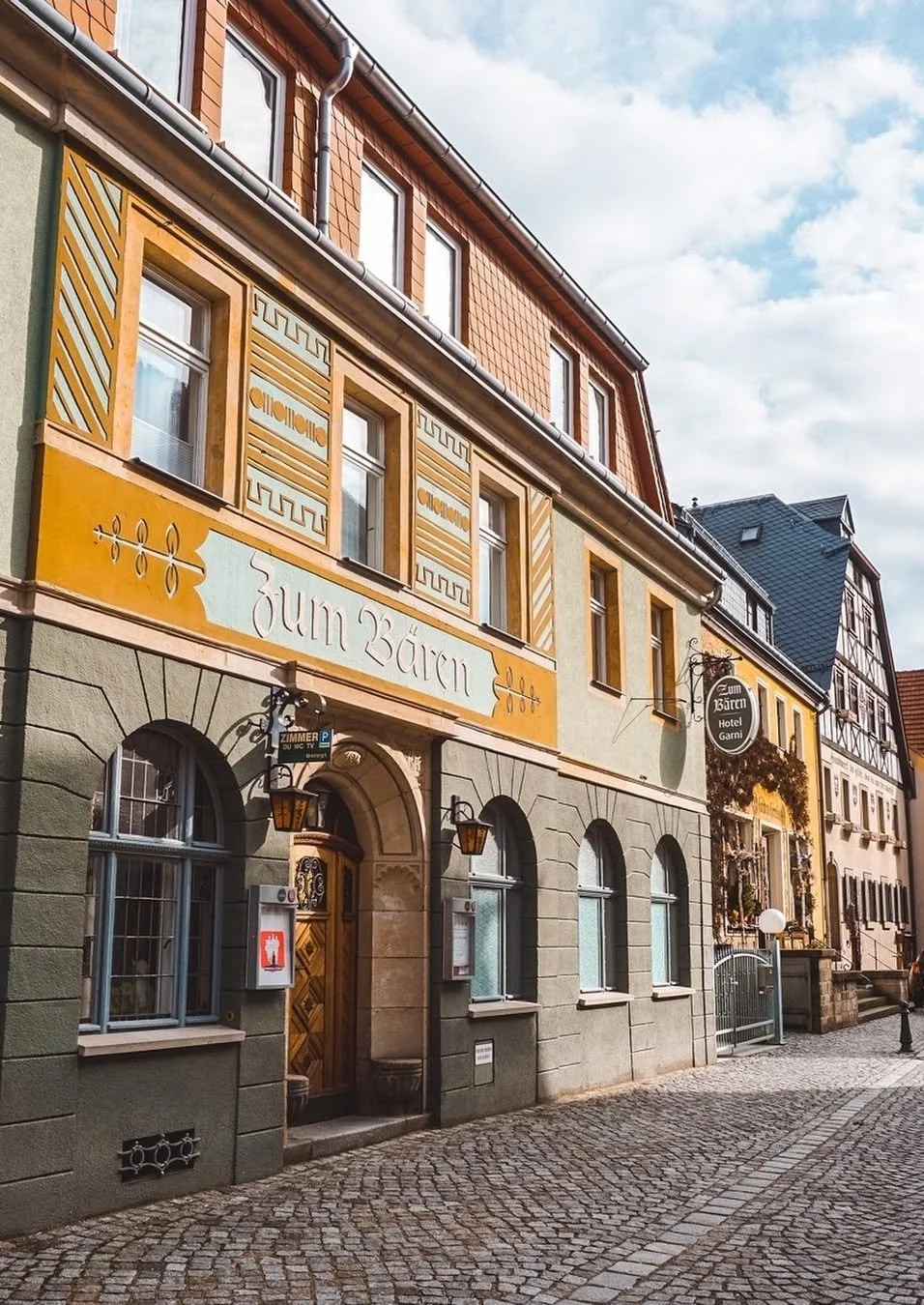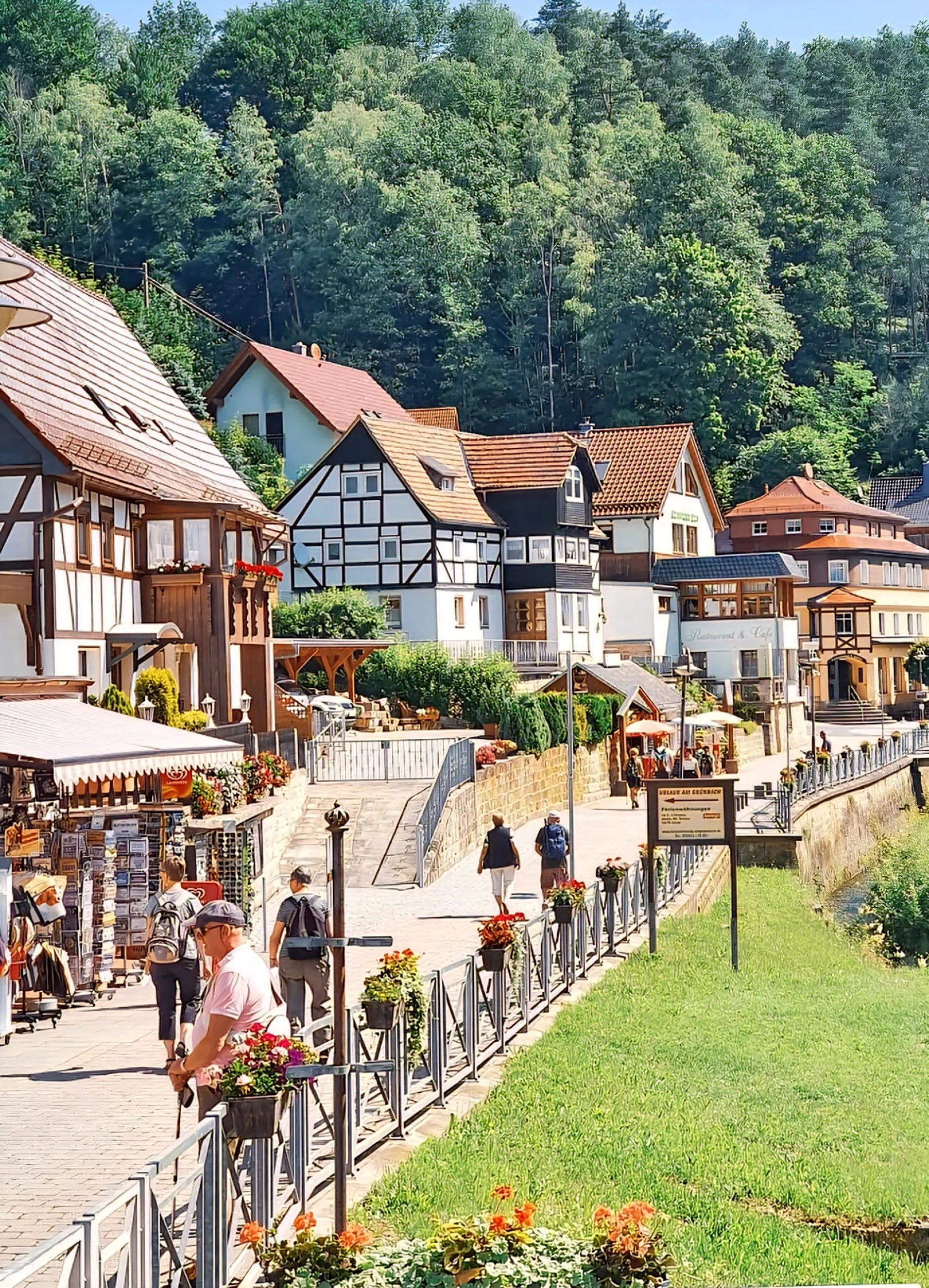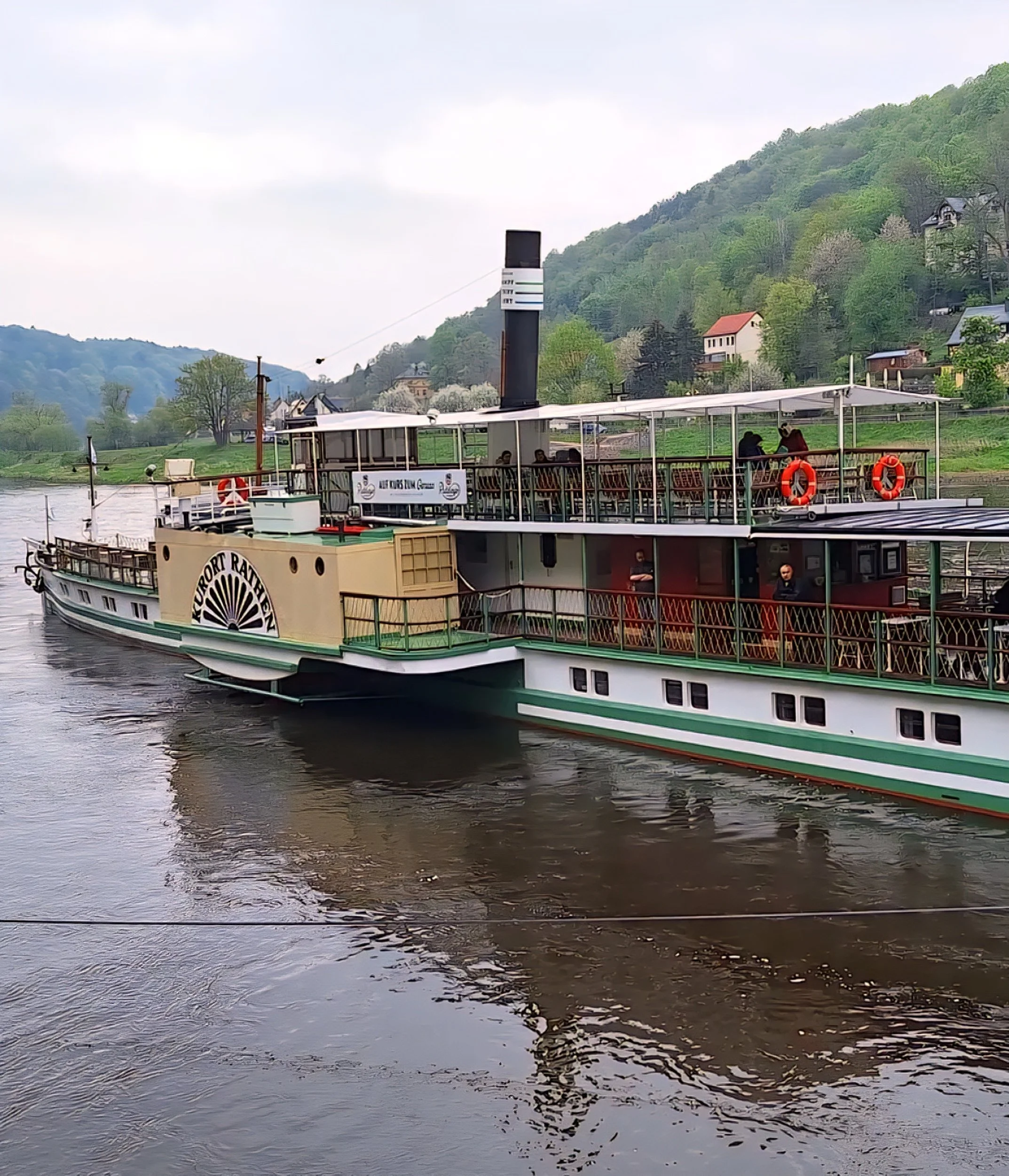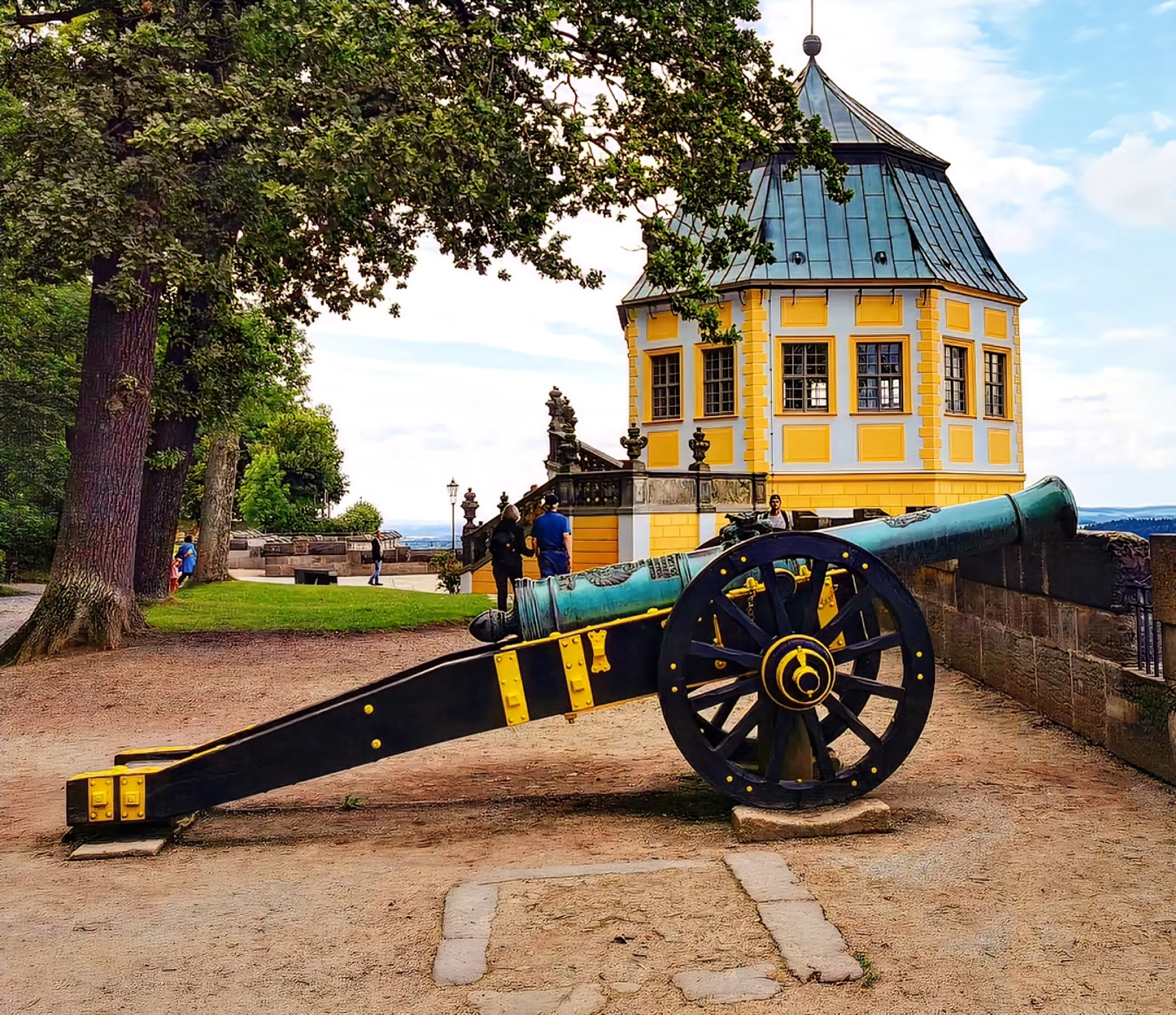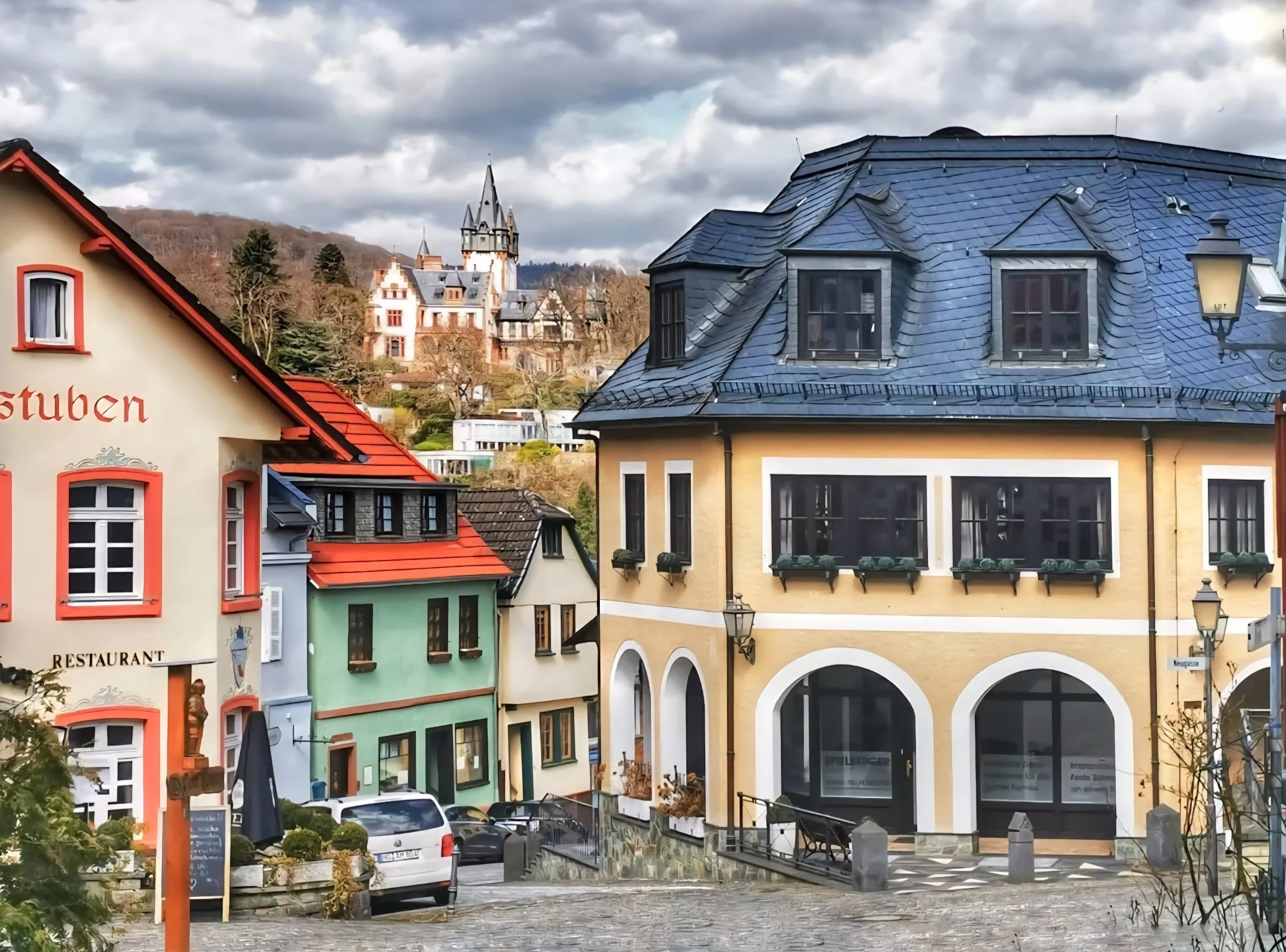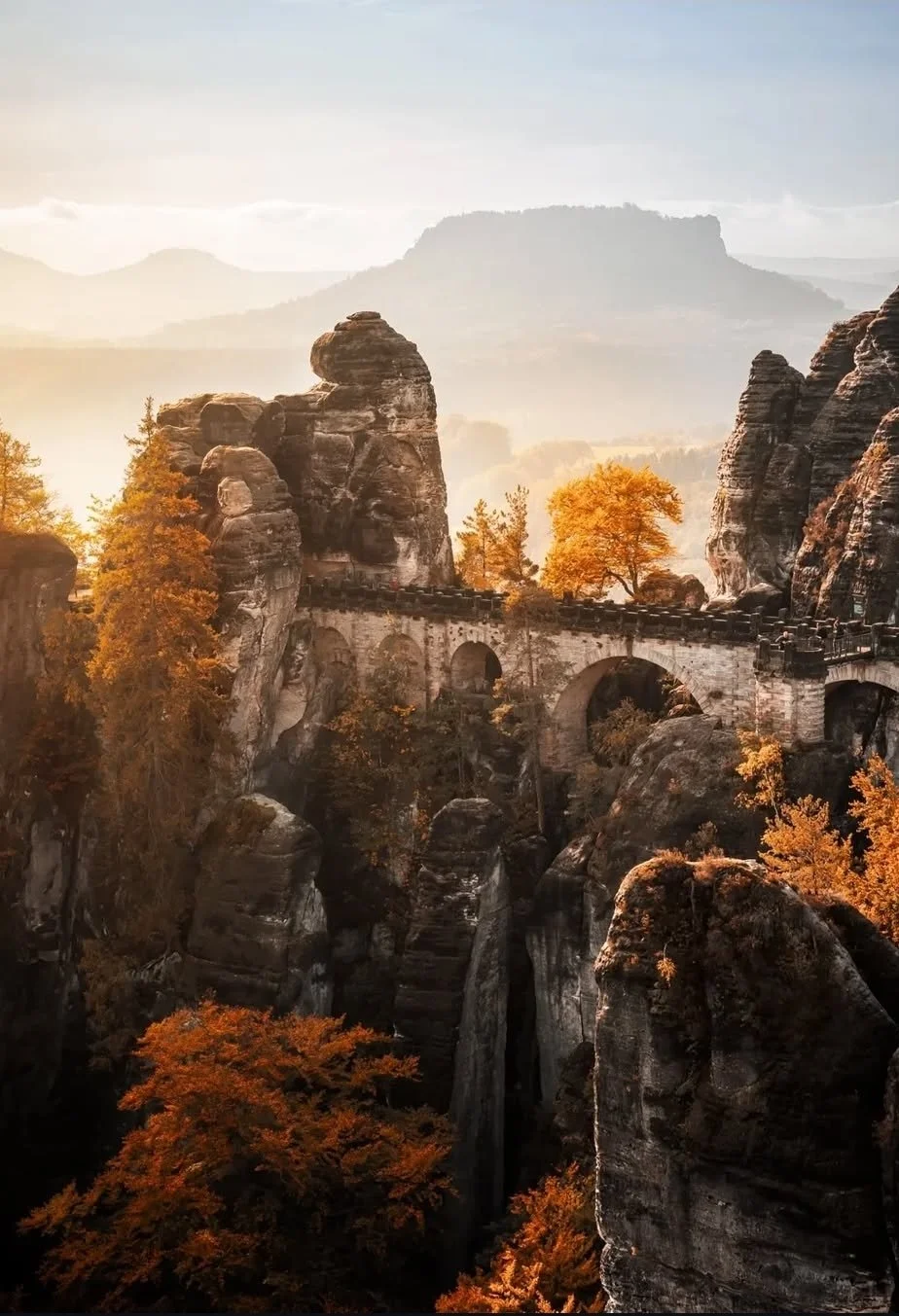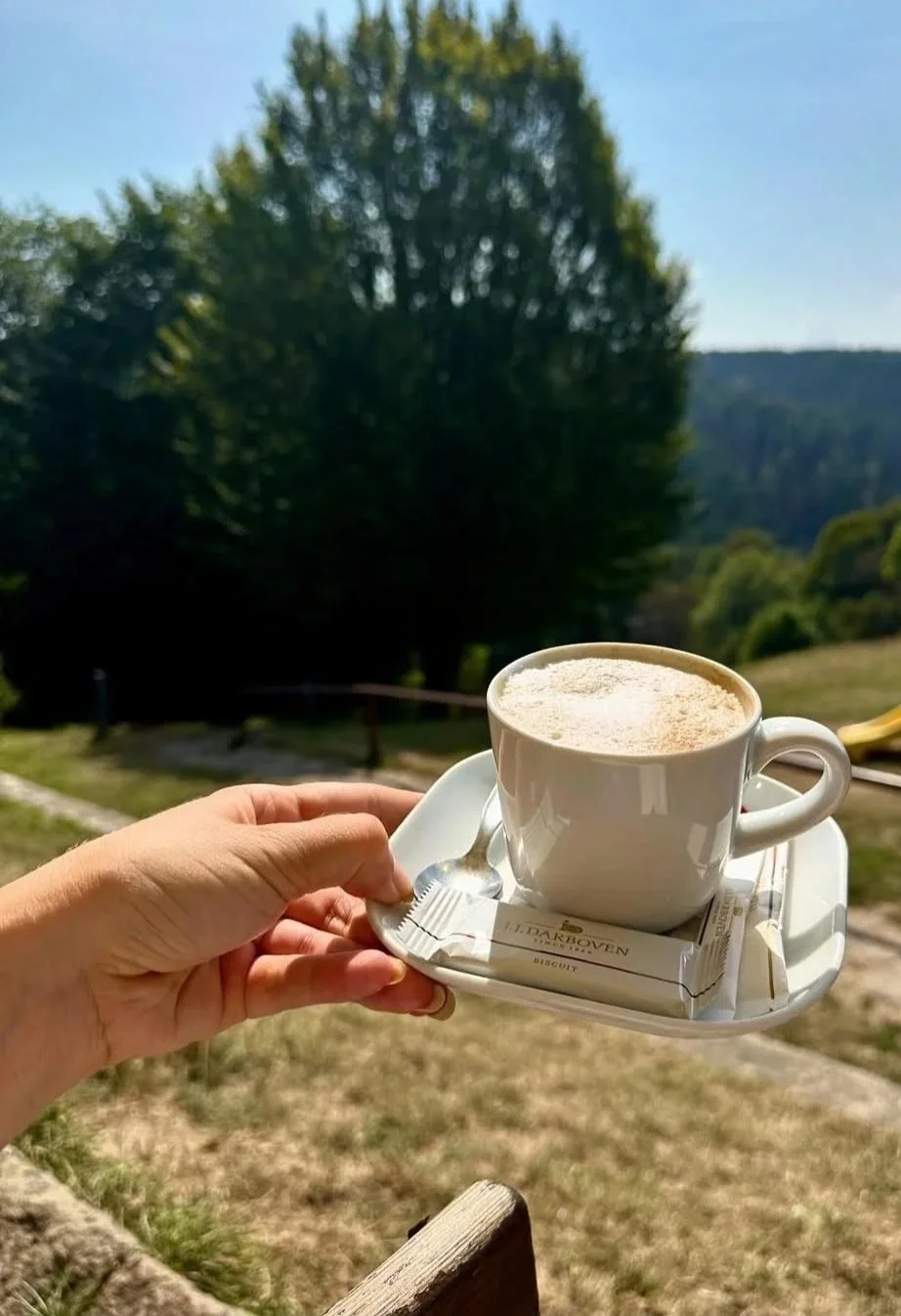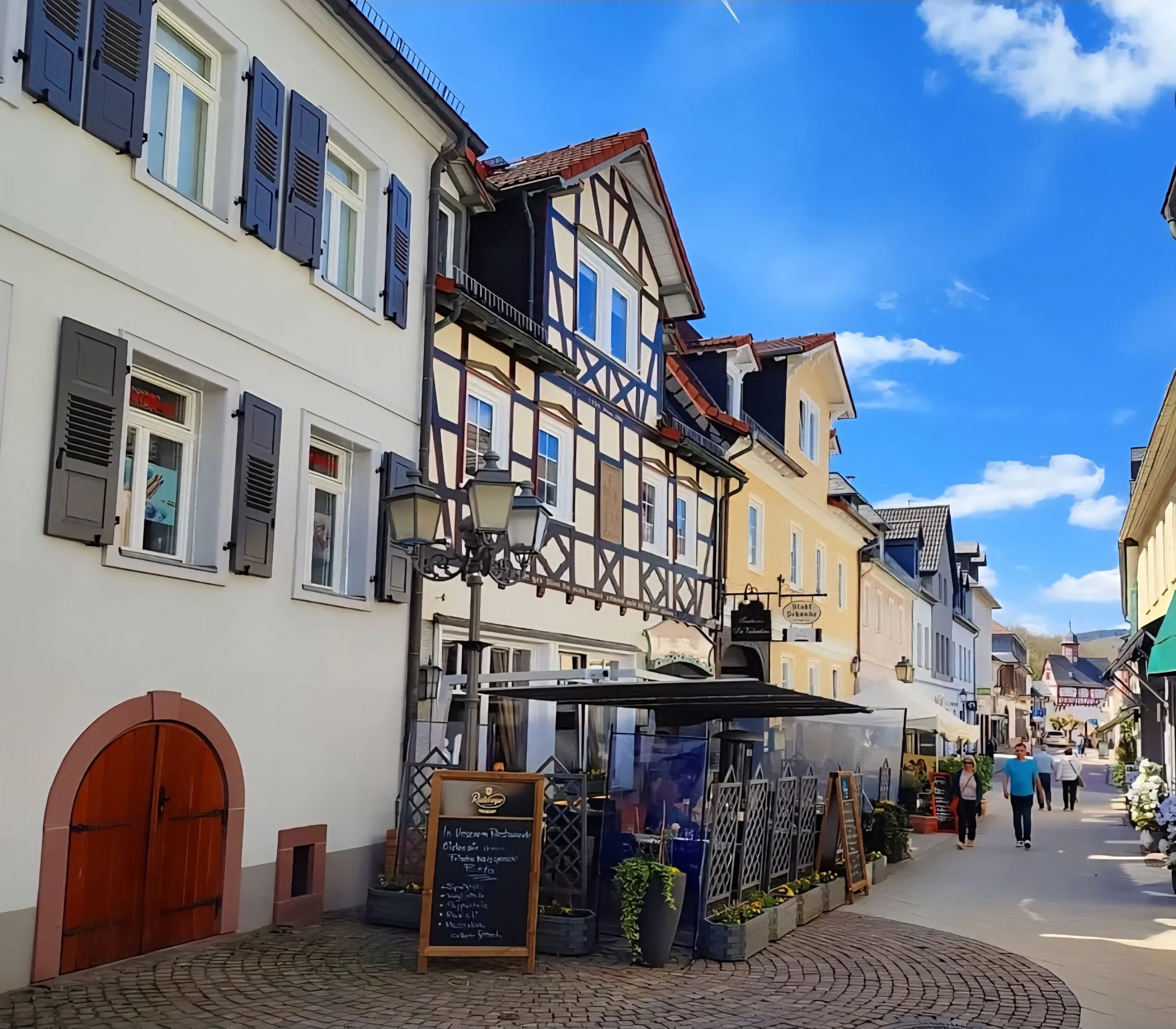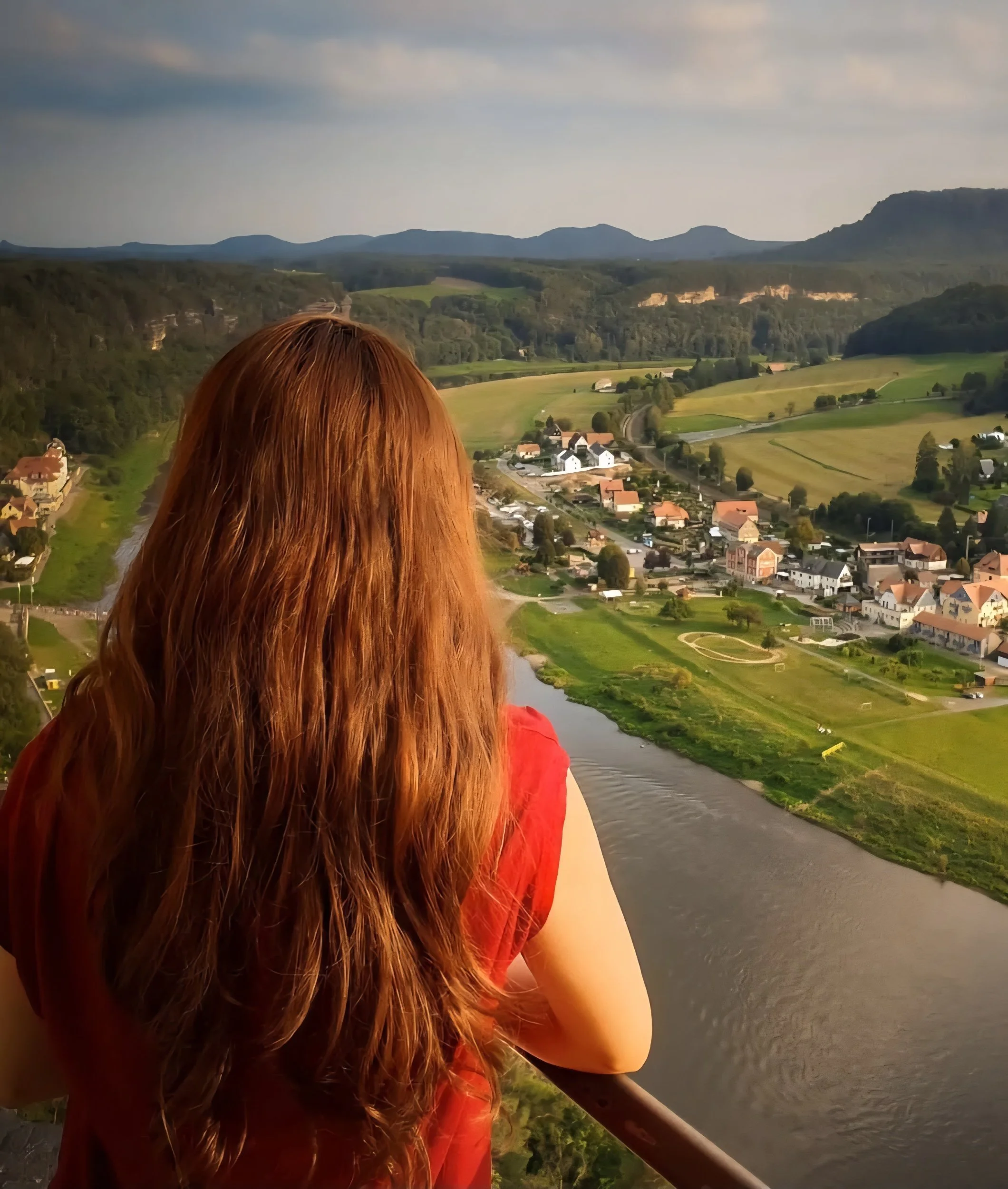A Solo Traveler’s Guide to Autumn in Saxon Switzerland, Germany
Why Saxon Switzerland Is Perfect for Solo Travel in Autumn
If you’re someone who enjoys quiet trails, dramatic scenery, and that comforting feeling of being completely on your own (but never truly isolated) Saxon Switzerland in the fall is a dream.
The crowds are gone by October. The summer hikers have moved on, and what’s left is a landscape that feels like it finally has space to breathe - and to welcome you. The forest turns into a soft patchwork of amber and rust, the cliffs catch the golden light just a little longer, and there’s a stillness in the air that makes everything feel more personal.
For solo travelers, this kind of calm is more than just nice - it’s practical. You get to take your time on the trails without dodging groups. There’s no pressure to keep up. You can grab a table for one at a café without feeling out of place. Guesthouses are more available (and often a bit cheaper), trains are quieter, and the whole rhythm of the place just slows down.
It’s not trendy. It’s not bucket list bait…. Autumn in Saxon Switzerland is made for people who want to go their own way and actually enjoy the stillness that comes with it.
What and Where Is Saxon Switzerland? (And Why It’s Worth the Trip in Autumn)
The name’s confusing, yeah - Saxon Switzerland isn’t in Switzerland at all. It’s a national park in eastern Germany, just south of Dresden, right near the Czech border. The “Switzerland” part came from a couple of homesick Swiss painters in the 1700s who said the landscape reminded them of back home. The name stuck, even if it throws people off.
What makes this area special is the landscape. It’s not high mountain territory like the Alps… no snowy peaks or ski resorts. Instead, you get dramatic sandstone cliffs, narrow gorges, forest trails, and quiet little towns tucked along the Elbe River. The kind of place where you can hike all morning, stop for cake in the afternoon, and not see more than a handful of people all day.
The most famous spot is the Bastei Bridge, which stretches across these jagged rock towers that almost don’t look real. But that’s just one part of it. The park covers around 90 square kilometers, and there are dozens of trails, lookouts, and quiet corners that feel totally untouched - especially in autumn.
Fall is really the sweet spot here. The trees turn gold and orange, the fog settles into the valleys in the mornings, and the crowds (what little there are) thin out even more. It’s peaceful in the best way: not empty, just calm. You can wander, take your time, and actually enjoy being by yourself without feeling like you’re missing out on anything.
If you’re already heading to Dresden, it’s an easy side trip. But honestly, it’s strong enough to be the main event - especially if you’re the kind of traveler who doesn’t need big cities or a packed itinerary to have a good time.
How to Get to Saxon Switzerland Without a Car (Solo Traveler’s Guide)
One of the best things about solo travel in Germany is how easy it is to move around without driving. Saxon Switzerland is no exception. You can get from Dresden to the heart of the national park in under an hour: no rental car, no complicated transfers, no stress.
Start by catching the S-Bahn S1 train from Dresden Hauptbahnhof (main station). Trains run frequently (usually every 30 minutes) and they’re rarely crowded in the fall. The route itself is worth mentioning: it follows the Elbe River, passing small towns, vineyards, and cliffs that get more dramatic the further you go. Grab a window seat on the right side for the best views.
Depending on where you want to base yourself, you can hop off at stations like Pirna, Kurort Rathen, Königstein, or Bad Schandau. Each stop is close to hiking trails, local guesthouses, and quiet village centers, and you can reach most trailheads on foot or with short local bus rides.
If you’re flying in from abroad, your best bet is to land in Berlin or Prague and take the train to Dresden from there. Both cities are well connected, and the trip into Saxony is smooth and scenic.
There’s no need for complicated navigation or expensive taxis. Just a train ticket, a good pair of shoes, and a bit of curiosity.
Where to Stay in Saxon Switzerland Without a Car
Saxon Switzerland doesn’t have a single “main town” the way some national parks do. Instead, it’s made up of a string of small riverside towns and villages spread along the Elbe River valley: all tucked between cliffs, forests, and sandstone formations. They’re all reachable by train from Dresden, all small enough to walk across in under ten minutes, and each has a different feel.
For solo travelers, choosing the right base can shape your entire experience. Do you want to be right on the trailhead? Somewhere with easy access to food and wellness spots? Or somewhere off the tourist radar with a bit more local rhythm?
Here are the three best options, with everything you need to decide what fits your style of travel.
Bad Schandau: The Most Convenient Town for Solo Travelers in Saxon Switzerland
Bad Schandau is one of the most established bases in the region, located right in the middle of Saxon Switzerland along the south bank of the Elbe River. It’s about 45 minutes from Dresden by train, and once you’re there, you won’t need a car for anything. Trails, ferries, groceries, cafés, and the river promenade are all within walking distance.
This town strikes a rare balance: it has enough infrastructure to be convenient, but still feels calm and cozy. You’ll find guesthouses with balconies looking out at the cliffs, riverside benches where you can sit and watch the paddle steamers pass by, and small restaurants that don’t bat an eye if you’re dining alone.
One of the biggest draws for solo travelers is the Toskana Therme, a modern wellness spa with indoor and outdoor thermal pools, a panoramic sauna, and quiet areas made for doing absolutely nothing. It’s especially nice on chilly autumn afternoons when you’re ready to unwind after a long hike.
If you want to hit the trails, you’re in luck — the Kirnitzschtalbahn (an old yellow tram that feels straight out of a storybook) takes you right into the forested valley behind town. From there, you can easily reach trailheads like Schrammsteine, Kuhstall, and Affensteine, all of which are breathtaking in autumn when the forest turns gold and the views open up above the trees.
Bad Schandau is also a great base if you're planning to stay for 4–5 days and want the freedom to mix hiking days with quieter, slower ones. It’s not “touristy,” but it’s used to travelers - and that makes solo exploring feel easy here.
Kurort Rathen: Car-Free Access to the Bastei Bridge and Forest Trails
Kurort Rathen is a tiny, car-free village tucked between the Elbe River and the towering cliffs of the national park. It's located just a few stops before Bad Schandau on the train line, and to get there, you disembark at Rathen train station, then cross the river by a small passenger ferry for a short, peaceful ride that sets the tone for the whole stay.
Rathen is right at the base of the trail to the Bastei Bridge, which means you can beat the crowds by walking up early in the morning or after most visitors have gone home. That’s a huge perk if you're visiting in October, when the fog hangs in the trees and the views from the bridge look like something out of a dream.
The town itself is minimal in the best possible way. A few guesthouses, a bakery, and a couple of local restaurants - and not much else. You won’t find nightlife or a bustling town square, but what you will find is quiet, deep rest, and the kind of atmosphere that makes you want to journal, read, or just take slow walks along the riverbank.
Rathen is ideal if you’re the kind of traveler who enjoys slow mornings, wants trails right outside your door, and doesn’t need a lot of extras. It’s especially good for short stays: two or three nights when you want to get right into nature without distraction.
Königstein: A Low-Key Base with Local Vibe and Big Views
Königstein is located just one stop past Rathen on the train line, slightly upriver from Bad Schandau, and it’s often overlooked (which is exactly why it’s worth considering...). The town stretches from the riverbank up to the base of the Königstein Fortress, one of the largest hilltop citadels in Europe, and it’s surrounded by forested hills and scenic walking paths.
What makes Königstein different is that it feels more lived-in. This isn’t just a hiking hub or spa destination - it’s a town with year-round residents, a few schools, proper shops, and a quieter, everyday pace. If you like places that aren’t trying to impress you but still end up doing so, Königstein hits that note.
The Festung Königstein itself is a must-visit, and you can reach it on foot via a steep but manageable trail that starts right in town. At the top, you’ll get open views over the Elbe Valley, and in late autumn, the trees below form a full palette of orange, yellow, and burgundy. If you prefer hiking routes that are a bit less crowded, Königstein gives you access to some lesser-known forest trails that don’t appear on every guidebook list (perfect for solo travelers who like to explore without a fixed agenda!)
The town also has several traditional gasthäuser (think wooden tables, hearty food, and a friendly but unpretentious vibe), where solo diners blend in easily. There’s no need to plan or reserve - just show up, eat well, and enjoy the calm.
Each of these towns has its own strong personality, and that’s the beauty of this part of Germany. You’ll find that all these towns work well for solo travelers.
And since they’re all linked by the same scenic S-Bahn route, you’re not locked into just one place. Some travelers even move between two bases during their stay - a couple of nights in Rathen to start the trip right on the trail, followed by a slower pace in Königstein or Bad Schandau to unwind.
Whichever you choose, you’re never far from a beautiful view, a quiet walk, or a moment that makes you feel like this corner of the world was built for people who like to travel alone.
What It’s Like to Hike in Saxon Switzerland in Autumn (Solo-Friendly Trails + Tips)
Hiking here is the reason a lot of people come - and in autumn, it’s hard to imagine a better time to do it. The air’s cooler, the trails are quieter, and the forest actually feels like the main character.
If you’re traveling solo, this place makes things easy. You don’t need a car, a guide, or much of a plan. Most of the trails start right near the train stations or from village centers. You just wake up, grab a coffee, maybe pack a sandwich, and head out.
The landscape changes a lot, which keeps things interesting. Some parts feel like a normal forest path: leafy, peaceful, easy to walk. Then suddenly you’re climbing up sandstone steps between cliffs, or standing on a platform looking down into a valley filled with fog. You’re never doing the same thing for too long, which is nice when you’re alone and want to stay engaged.
A few hikes are especially good if you’re solo and want something scenic but not intense.
The Bastei Bridge loop from Rathen is the most obvious one to start with. Yeah, it’s the famous spot (and sure, it gets photographed a lot), but it’s still worth it. If you go early in the day, it’s actually really peaceful. You can start the hike straight from the village, walk through the forest, and be at the bridge in about 45 minutes. There are views of the Elbe River from the top, and in October, the trees below are every possible shade of orange. It’s a short loop (maybe two hours total), but a great intro to the area.
If you want something a little more active, the Schrammsteine trail near Bad Schandau is a step up. It involves some climbing (metal railings, steep stairs), but the views at the top are next level. You can see across the whole Elbe Sandstone range, especially clear on cool, crisp days. This one is better if you’re comfortable with heights, but you don’t need to be an expert. Just wear decent shoes and take your time.
Then there’s Pfaffenstein, which not many people talk about but is absolutely worth it. It’s near Königstein and has a quieter feel. You hike up through forest and end up on a plateau with these weird, dramatic rock formations - and one tall spire called the Barbarine that just sticks out of the ground like it’s been photoshopped in. It feels more remote, but it’s still well-marked and easy to follow.
One thing that’s great about hiking here alone is that it never feels risky. There’s usually someone else on the trail, even if it’s just a retired local out for a walk. And you’re never that far from a village, so if the weather turns or you get tired, it’s easy to pivot. Cell service is hit or miss depending on where you are, but nothing too sketchy.
Just a few tips to keep in mind: sunset sneaks up on you fast in the fall, so don’t start longer hikes too late in the day. Trails can get slippery after rain, especially where there are stone steps or roots. And bring snacks! There aren’t food huts along the way like in the Alps. You’ll want something to eat when you hit a bench with a view.
Overall, it’s one of those rare places where hiking solo feels like the right way to do it. You can go at your own pace, stop when you want, and just let the day unfold.
Restaurants and Cafés in Saxon Switzerland
Eating alone can be the awkward part of solo travel - especially in smaller towns where everything closes early, and restaurants seem like they’re made for couples and families. The good news? Saxon Switzerland is actually pretty comfortable for solo diners, once you know what to expect.
First off, no one’s going to look at you weird if you sit at a table by yourself. These towns are used to hikers, cyclists, and people just passing through for a day or two. It’s not uncommon to see someone come in with a backpack, order a warm meal, and just sit quietly with a book or their phone. No pressure, no side-eyes.
That said, don’t expect a lot of dining options… especially in places like Rathen or Königstein. You’re not in a big city. A lot of restaurants close by 8 or 9pm (earlier in shoulder season), and some places shut entirely one or two days a week. If you’re hungry after a long hike, it’s best not to assume you’ll “figure it out later.” Planning ahead just makes things easier.
In Bad Schandau, you’ve got the most choice. There are a few casual places near the river that serve hearty local dishes like schnitzel, goulash, spaetzle, that kind of thing. Café Richter is a solid pick if you want something cozy in the afternoon: good coffee, homemade cakes, and a calm atmosphere where you can sit and not feel rushed. For dinner, Gasthaus Goldener Anker is friendly, no-fuss, and warm in every sense. They’re used to people dining alone, especially in autumn.
In Rathen, things are more limited, but that’s not a bad thing. You’ll find a couple of hotel restaurants that serve dinner to guests and outsiders alike. The food is usually traditional and filling: think stews, roasted meats, local wine or beer. If you're staying overnight, it's worth asking your guesthouse owner where to go or even booking a spot when you check in. They’ll usually be happy to help.
Königstein has a slightly more local vibe. You might not find menus in English everywhere, but the places are friendly and used to visitors. Gaststätte Zur Schmiede is a good example of that: relaxed, good prices, big portions, and the kind of spot where no one cares what you’re doing as long as you’re eating well and minding your own business.
If you’re not in the mood to eat out, honestly, no one will judge you for grabbing some bread, cheese, and fruit from a local shop and having a quiet dinner wherever you’re staying. Most guesthouses will let you use a fridge or will pack a lunch for you if you ask. It’s a very practical region - not fussy or pretentious.
Bottom line? You’re not coming here for trendy food spots or artisan cocktails. You’re coming for a good warm meal after being outdoors all day. And you’ll find that, without having to feel weird about being on your own.
Slow Culture in Saxon Switzerland: Art, History, and Local Craft to Explore on Your Own
It’s easy to think of Saxon Switzerland as just a hiking destination - and to be fair, the cliffs and forests deserve the attention. But if you slow down and look beyond the trails, there’s a quieter side to the region that’s just as rewarding. Small galleries, local craft shops, and a few cultural spots tucked into the hills or hidden in plain sight. None of it crowded. Just simple, thoughtful places that fit solo travel really well.
One of the most unique spots is the Künstlerhaus in Stadt Wehlen, a small artists’ house and gallery just across the river from the main train line. It’s not the kind of place with guided tours or audio headsets. Just local art, ceramics, and changing exhibitions that reflect the landscape and seasons. If you’re staying nearby or want a quiet afternoon activity after a hike, this is a nice stop. The town itself is lovely too: cobbled lanes, old buildings, and a few cafés that don’t rush you out the door.
Over in Lauenstein, there's the Kunsthandwerkhaus — a workshop and store that focuses on traditional Saxon craftsmanship. Woodcarving, glasswork, handmade toys, pottery… it’s all here, and much of it is made by people who still live and work in the region. It’s especially cozy in autumn, when the shelves start to fill with seasonal pieces and the smell of beeswax and carved wood hangs in the air. It takes a bit longer to reach (around an hour from Bad Schandau), but if you’re into slow travel and love objects with a story, it’s worth the detour.
Closer to Königstein, the Fortress isn’t just a viewpoint. Inside the stone walls, there are low-key exhibits about Saxon military history, old kitchens and barracks, and little displays of everyday life from centuries past. It’s a good choice on a cloudy or drizzly day, especially if you’re already planning to hike up there. Ps. the café inside the fortress is warm, surprisingly good, and a nice reward after the uphill walk.
For something a bit different, Graupa (just outside Pirna) is home to the Richard Wagner Museum, set in the villa where he lived and composed for a short period. Even if you’re not into opera, the building is beautiful, and the exhibition gives some insight into the cultural side of Saxony. It's small, quiet, and manageable - perfect if you're solo and want to explore at your own pace.
And finally, don’t skip the local corners: many guesthouses, especially in Rathen and Bad Schandau, display local artwork or sell handmade crafts in their lobbies. You’ll also find the occasional pop-up ceramic or woodshop in village centers - usually with handwritten signs out front, a bell on the door, and someone inside happy to chat (or not, if you prefer browsing alone).
These kinds of places won’t take up your whole day. But they give you small, meaningful ways to connect to the region beyond the trails, and they’re especially good for solo travelers who like their culture quiet, low-pressure, and a little off the radar.
3-Day Solo Itinerary for Autumn in Saxon Switzerland
This isn’t one of those itineraries that crams in eight things a day. You’re here for quiet trails, fresh air, and maybe a slice of cake with no one talking at you. This plan gives you enough structure to make the most of your time, but leaves room to breathe - or bail on your plan if the fog rolls in and you’d rather nap.
Everything’s doable by train or tram. No car, no stress.
Day 1: Bastei Bridge, Forest Trails, and a Soft Landing
Base: Rathen
Take the S-Bahn from Dresden to Kurort Rathen: it’s about 45 minutes, and the last bit along the Elbe is gorgeous. Once you hop off, there’s a quick ferry across the river to reach the village. It’s small, quiet, and feels like it’s from another century.
Drop your bag at your guesthouse and walk straight into the forest. The Bastei Bridge loop is the easiest way to get your bearings. It’s short (2 hours, maybe 3 if you take it slow) but packed with views. Early in the day, or around sunset, it’s almost empty. The bridge itself is impressive, but the way it’s perched above the valley? That’s what stays with you.
Back in town, grab a meal if somewhere’s open - or self-cater. In Rathen, things wind down early and nobody’s rushing to serve you. It’s part of the charm, or a little frustrating, depending on your mood.
Evening? Sit outside. Walk the river path. Or just take a long shower and crash early. You’ll be tired in that good way.
Day 2: Schrammsteine Views and Spa Recovery
Base: Bad Schandau
Head out after breakfast and take the train to Bad Schandau. It’s a bigger base with more food options and a small-town feel. You’ll probably want to stay here your second night for convenience alone.
Today’s hike: Schrammsteine. You can ride the Kirnitzschtalbahn tram from town straight into the forest, which feels like a little adventure on its own. The trail gets steeper than Day 1 (stairs, ladders, railings) but if you take your time, it’s totally doable. You’ll earn the views. And they’re worth it.
After the hike, don’t overthink it: go straight to Toskana Therme. The thermal spa in town has warm pools, saunas, and saltwater rooms where music plays underwater. It sounds weird, and it kind of is, but it works. Especially after a long hike.
For dinner, stick with something close and cozy. A gasthaus near the river, nothing fancy. They’re used to solo guests - just bring a book or people-watch.
Day 3: Königstein Fortress + Low-Key Culture Stops
Base: Either stick with Bad Schandau or do a final hop to Königstein
If you’re up for one more climb, Festung Königstein is a good send-off. You can hike up from town (it’s steep but manageable) and the fortress at the top is more than just a viewpoint. There’s local history, strange old kitchens, and sweeping views of the Elbe Valley. Plus, there’s a café inside. You’ll want it.
After that, you’ve got options. If the weather’s solid, take a long walk along the river, or just find a bench and chill. If it’s rainy, or you’re not in the mood for more hiking, consider one of the smaller cultural stops nearby. The Künstlerhaus in Stadt Wehlen is a sweet little gallery run by local artists, or you could stop in Graupa for the Wagner Museum, even if you’re not into opera, it’s a peaceful place to spend an hour.
Head back to Dresden when you’re ready. Or stay one more night and leave slow the next day. No pressure either way.
A Few Things to Know:
Shops and cafés close early. Always check hours if you’re counting on dinner out.
Bring snacks and water. Even short hikes have zero food options once you’re on the trail.
Cash still matters. Some places don’t take cards, especially in Rathen and Königstein.
Offline maps help. Komoot or AllTrails work well. Cell coverage is decent, but not guaranteed.
That’s it. You’ve seen the cliffs, soaked in the spa, eaten warm food in quiet places, and walked more than you thought you would. If that’s not a solid solo trip, I don’t know what is.
Before You Go: What to Expect When Traveling Solo Here
If you’ve never been to this part of Germany before, don’t expect big cities or a packed itinerary. Saxon Switzerland moves at a slower pace, and that’s the whole point.
You’ll have good days on the trails, and maybe a few quiet evenings where nothing’s open and you're just eating bread and cheese in your room. You might get lucky with weather, or you might spend a few hours walking in the cold. But either way, it works - because this region gives you space to just be on your own without feeling out of place.
You won’t need a lot of gear, or German skills, or a perfectly planned route. Just show up, keep your plans loose, and stay curious. Most of the good stuff here comes from not rushing.
It’s not a trendy destination, but it’s the kind of place that’s easy to settle into. And if you’re looking for solo time that’s calm, scenic, and simple, it’s probably exactly what you need.
Looking for More Slow Travel Ideas in Germany?
If you enjoyed the feel of Saxon Switzerland and want to explore more places that mix nature, quiet towns, and slow-paced adventure, here are a few other guides that might be right up your alley:
Why the Black Forest in Baden-Baden Should Be Your Next Nature Escape — Forest trails, spa towns, and scenic drives that are perfect for recharging without the crowds.
Best Boutique Hotels for Relaxation in Germany to Explore This Spring — If you care as much about where you stay as what you do, this one’s for you. Quiet boutique hotels that are worth planning a trip around.
Castle to Castle Hiking: A Culinary Journey Through Europe’s Historic Trails — A deeper dive into multi-day hikes that combine historic landscapes with good food and minimal fuss.
FAQs About Solo Travel in Saxon Switzerland in Autumn
Is Saxon Switzerland safe for solo travelers?
Yes, it's very safe. The towns are small, the trails are well-marked, and the overall vibe is calm and low-key. As always, tell someone your hiking plans if you're going off the beaten path, and avoid starting longer hikes late in the day.
Can I visit Saxon Switzerland without a car?
Absolutely. The S-Bahn train connects all the key towns along the Elbe River — Rathen, Bad Schandau, Königstein, and more. From there, most trails and sights are reachable on foot, by tram, or by local ferry. It’s one of the easiest national parks in Europe to explore car-free.
What’s the best time to visit in autumn?
Late September through mid-October is ideal. That’s when the leaves start to change, the weather is still manageable, and the trails are quieter. By late October, it gets colder and darker, but still doable if you plan around daylight.
Do I need to speak German to get around?
Not really. Most people in the tourism sector speak at least basic English, and menus often have translations. That said, learning a few key phrases (like ordering food or asking for directions) goes a long way.
Are the hikes okay for beginners?
Yes. Some trails involve stairs, ladders, or a bit of climbing, but you can choose routes that suit your level. Bastei Bridge is easy and scenic. Schrammsteine is steeper, but manageable if you’re steady on your feet. Everything is well signposted.
What should I pack for hiking in autumn?
Layers, a waterproof jacket, decent shoes with grip, and a small backpack. Bring snacks and water—there aren’t food stops mid-hike. Offline maps are also helpful in case you lose service on the trail.
What if I don’t want to hike every day?
Totally fine. There are small museums, local galleries, riverside walks, and spas you can visit. Saxon Switzerland is just as much about slow days as it is about active ones.

